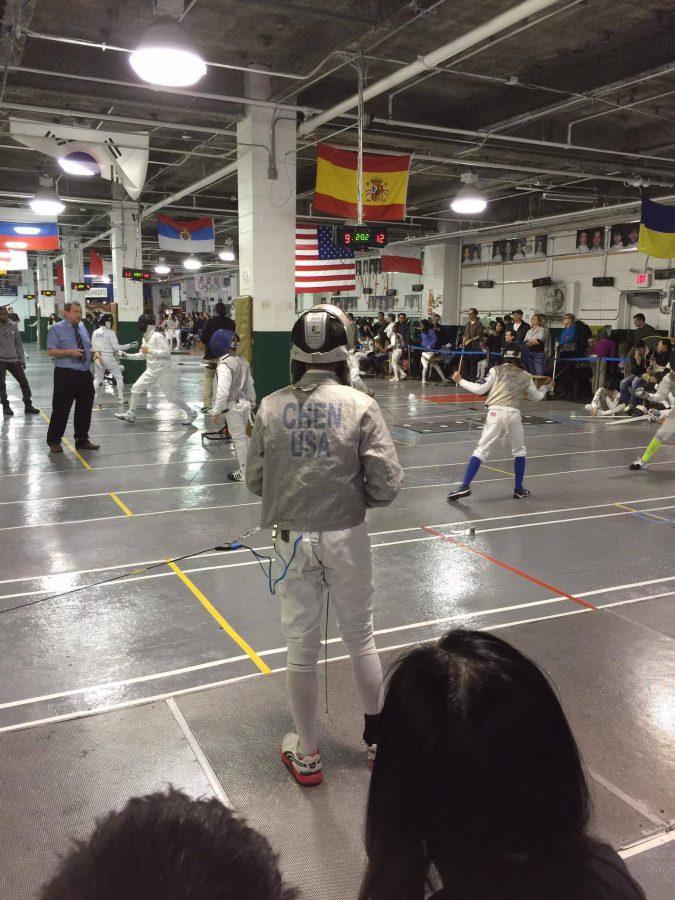
Maxwell Chen (10) began fencing in second grade when he joined a club at his old school in New York: “I wanted to try it out and ended up really enjoying it.” When asked why he preferred this sport over others he said, “I don’t really enjoy playing team sports.” With team sports, one gets the pressure from having to do well for the teammates in addition to oneself. He prefers this individual sport so he can “focus on [himself].”
After transferring to TAS, Max now has less time to train than he did before. He practices three times a week and 2 hours each time. Training begins with warming up and then drills (repeating movements, strategies, and steps). Finally, fencers pair up with others to free-fence.
The most challenging part of this sport proves to be speed., speed is crucial to fencing as each round starts and ends so quickly. With the sabre especially, Max notes that “Without good speed and reflexes, you wouldn’t be effective even if you have good strategies.”
Upon being asked about his most memorable moment in his fencing career, he recalled an incident at a small competition back in New York. During the pool rounds, he got paired with the son of an Olympic fencer. At first, he beat his opponent by 5-4. Max later saw the father yell at the boy, who “pretty much [peed] himself.” Fifteen minutes later, Max lost by a longshot 5-2. In the end, he was just shocked by the occurrence.
The first signs of fencing dates back to Ancient Egypt around 1190 B.C, but the modern fencing we see today most closely originated from traditional sword-fighting in Spain in the 15th century. Fencing began moving from a form of military training to a sport circa 14th century. The combat sport was included in the first modern Olympics in Athens 1896. Though typically called “a gentleman’s sport” due to its male-dominant history, women became included in the Games in 1926. Today, there are three categories of fencing when competing, using three different blades. The sabre, the lightest weapon and fastest game, targets the arms, head, and torso. For the epee, the heaviest weapon and slowest game, the whole body is a target area. The foil, the moderate arm, only allows the torso as a target area. Typical competitions consist of players grouped in pools at first and play against each other in short rounds out of 5. You win, you move up. As one goes further into the competitions, the later matches go up to 15. Essentially, you get to continue until you lose.




![[PHOTO COURTESY OF PIXABAY]](https://blueandgoldonline.org/wp-content/uploads/2025/03/white-18227_1280-1200x803.jpg)

![[PHOTO COURTESY OF PIXABAY]](https://blueandgoldonline.org/wp-content/uploads/2025/03/fire-6706674_1280-1200x800.jpg)
